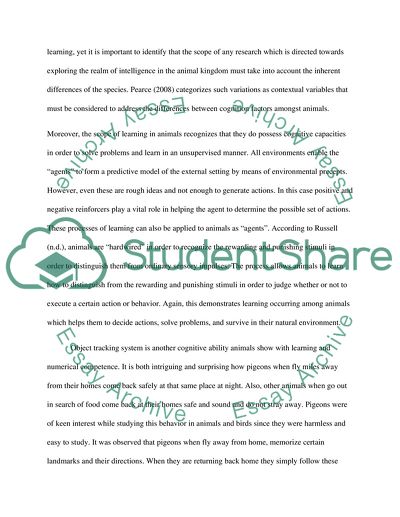Cite this document
(Animal Learning and Cognition Essay Example | Topics and Well Written Essays - 1750 words, n.d.)
Animal Learning and Cognition Essay Example | Topics and Well Written Essays - 1750 words. Retrieved from https://studentshare.org/psychology/1806961-animal-cognition-pick-the-topic-for-me
Animal Learning and Cognition Essay Example | Topics and Well Written Essays - 1750 words. Retrieved from https://studentshare.org/psychology/1806961-animal-cognition-pick-the-topic-for-me
(Animal Learning and Cognition Essay Example | Topics and Well Written Essays - 1750 Words)
Animal Learning and Cognition Essay Example | Topics and Well Written Essays - 1750 Words. https://studentshare.org/psychology/1806961-animal-cognition-pick-the-topic-for-me.
Animal Learning and Cognition Essay Example | Topics and Well Written Essays - 1750 Words. https://studentshare.org/psychology/1806961-animal-cognition-pick-the-topic-for-me.
“Animal Learning and Cognition Essay Example | Topics and Well Written Essays - 1750 Words”, n.d. https://studentshare.org/psychology/1806961-animal-cognition-pick-the-topic-for-me.


